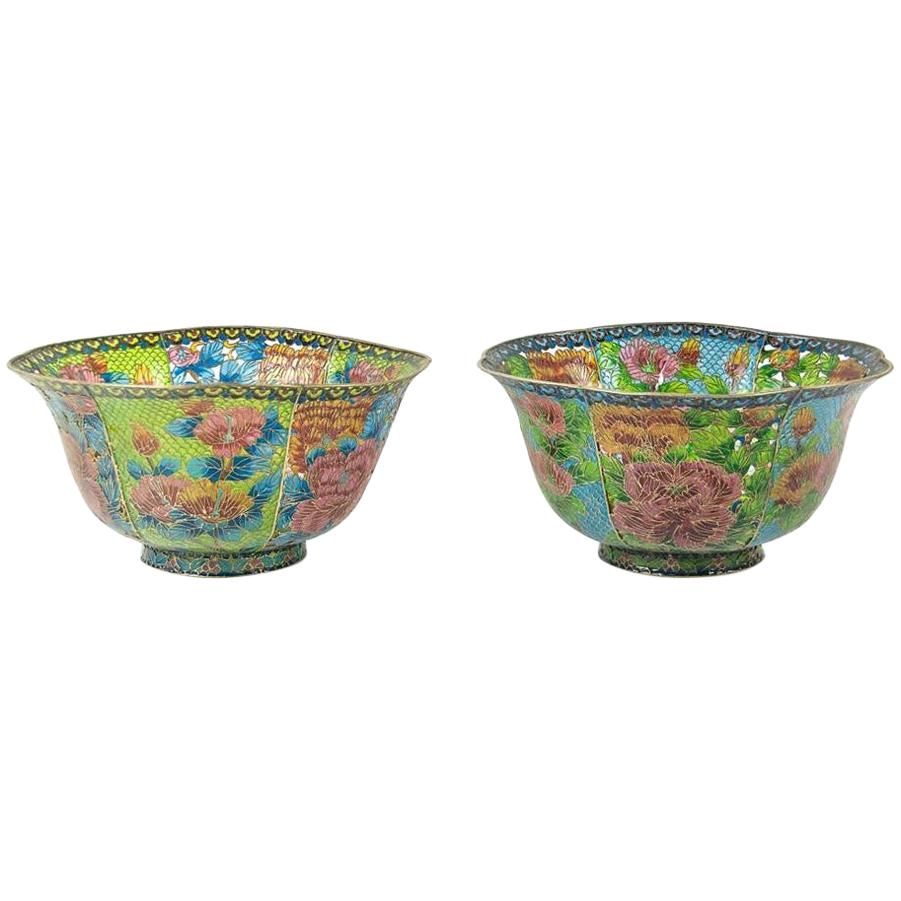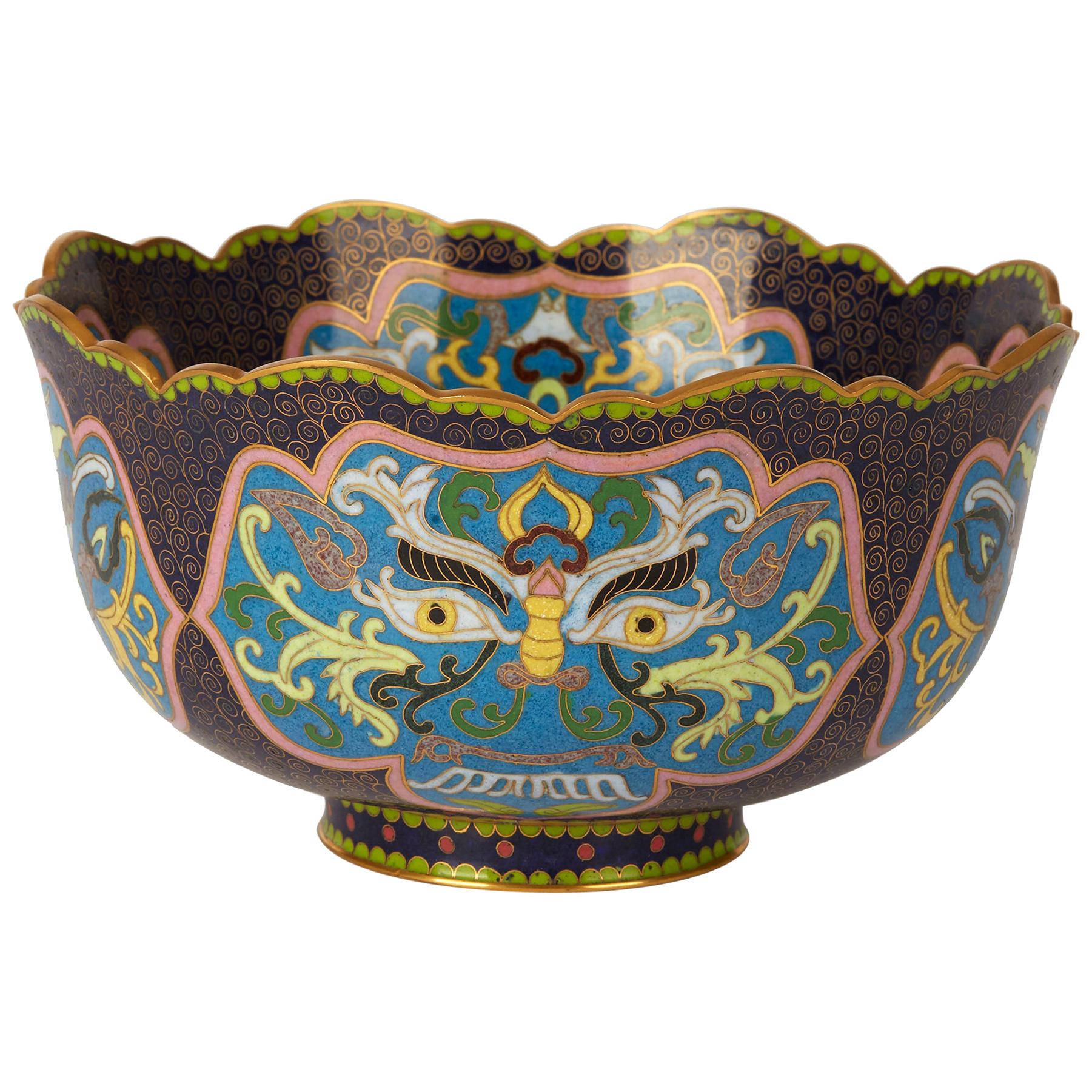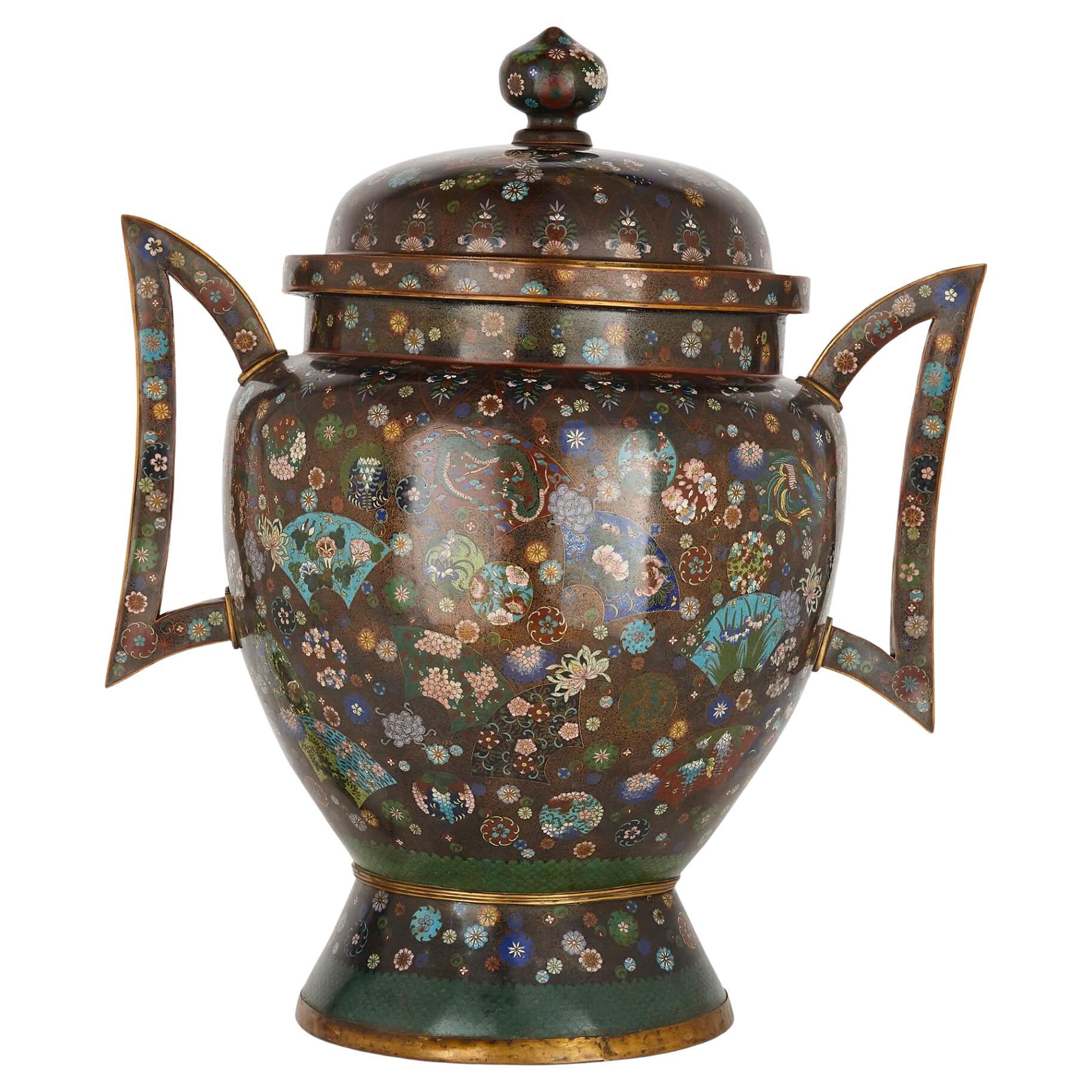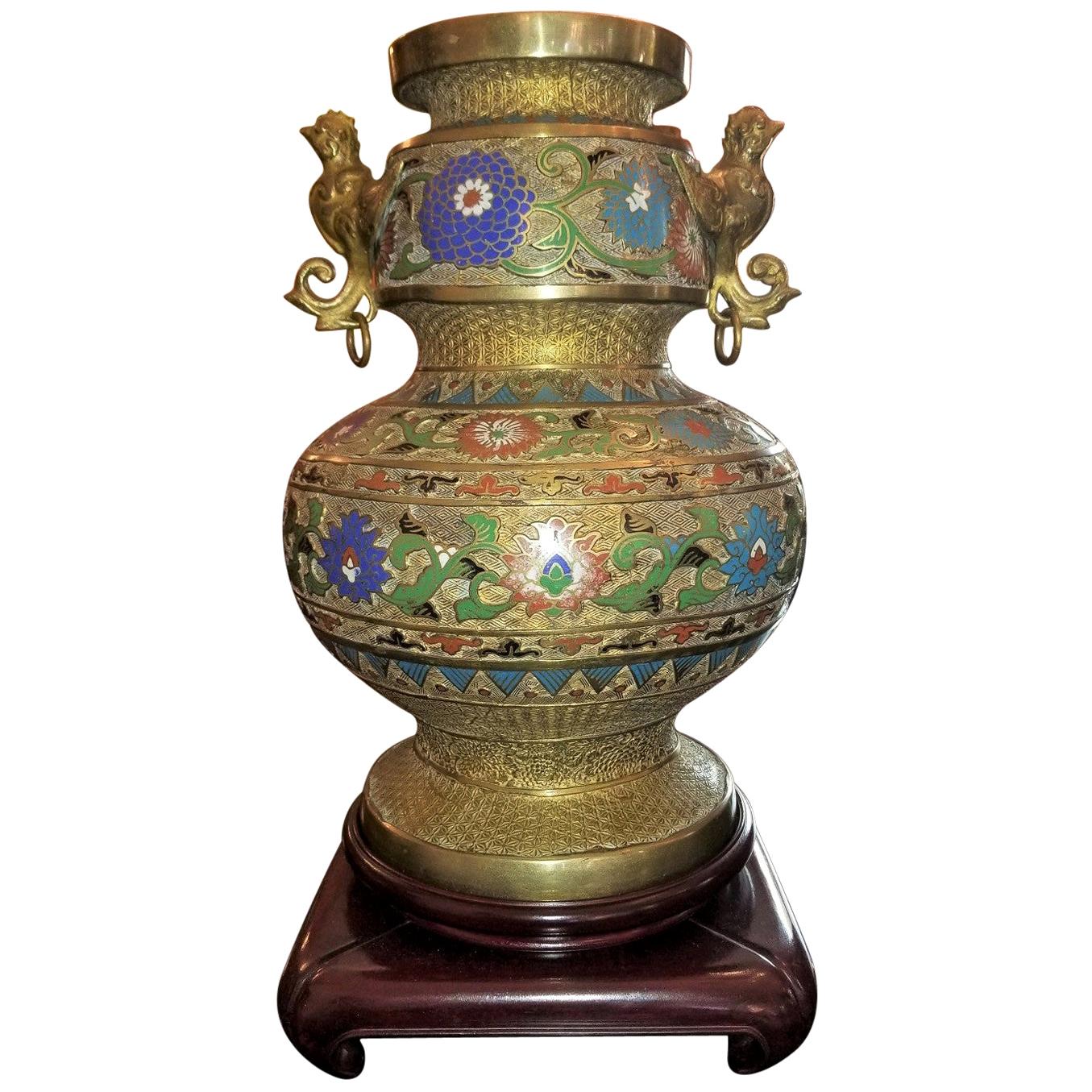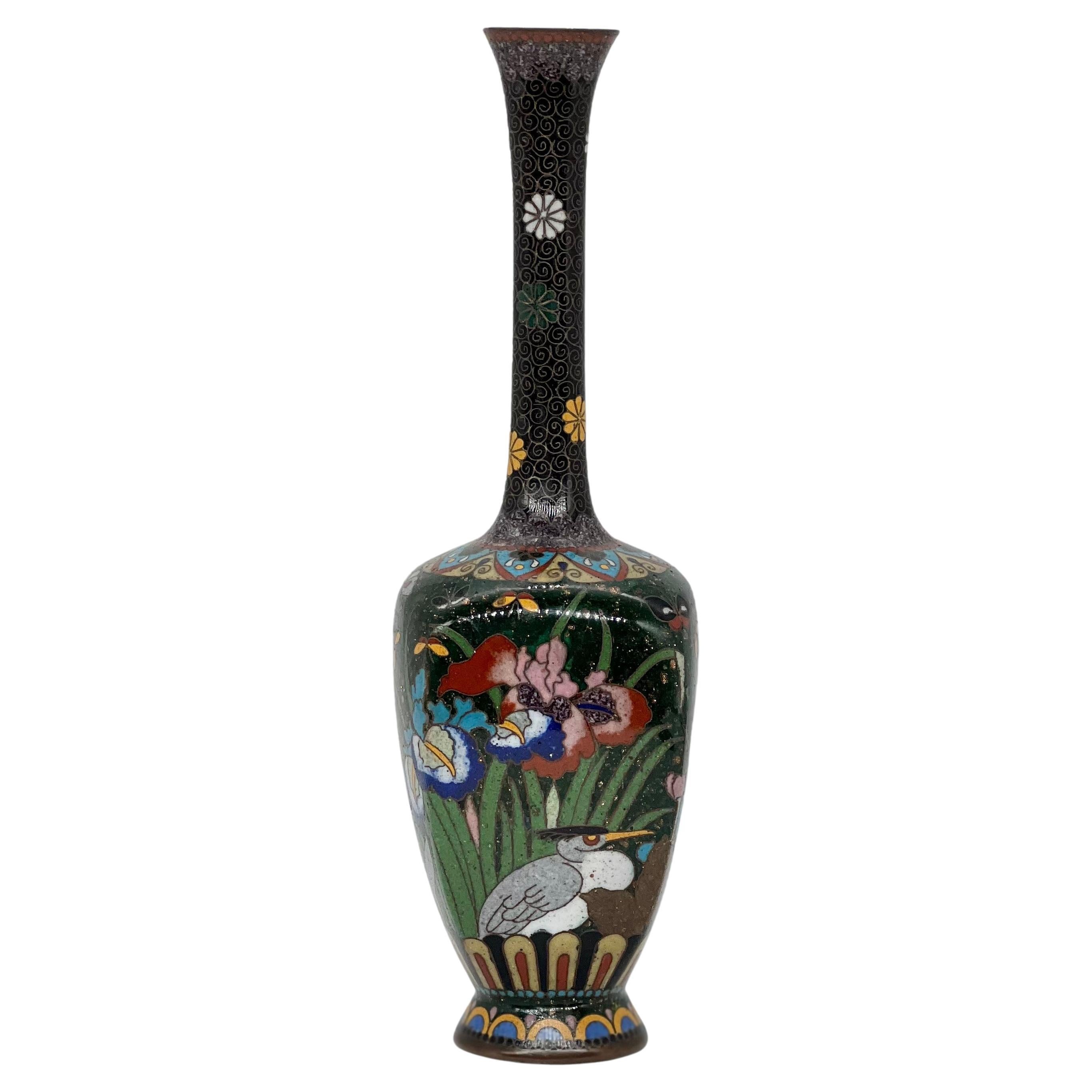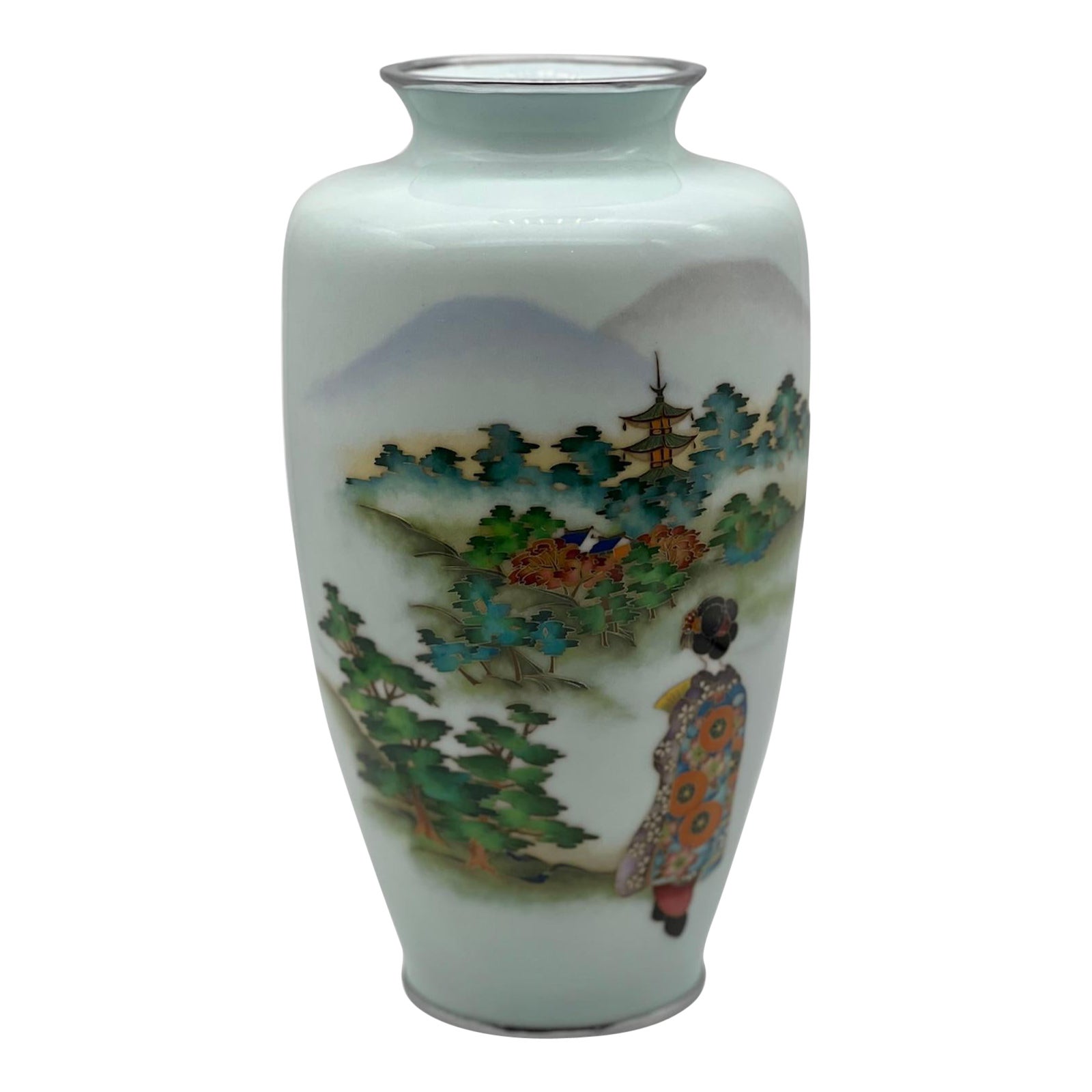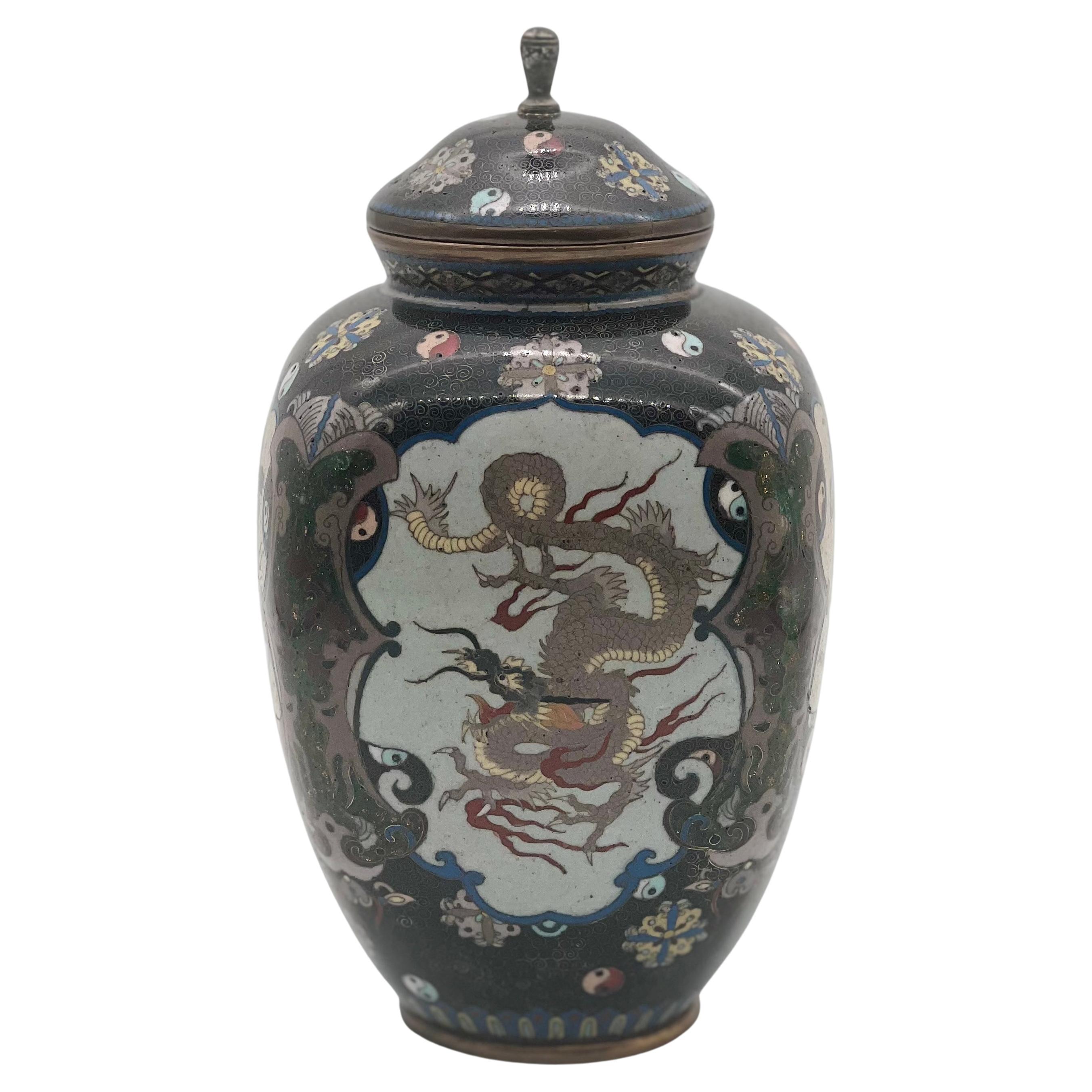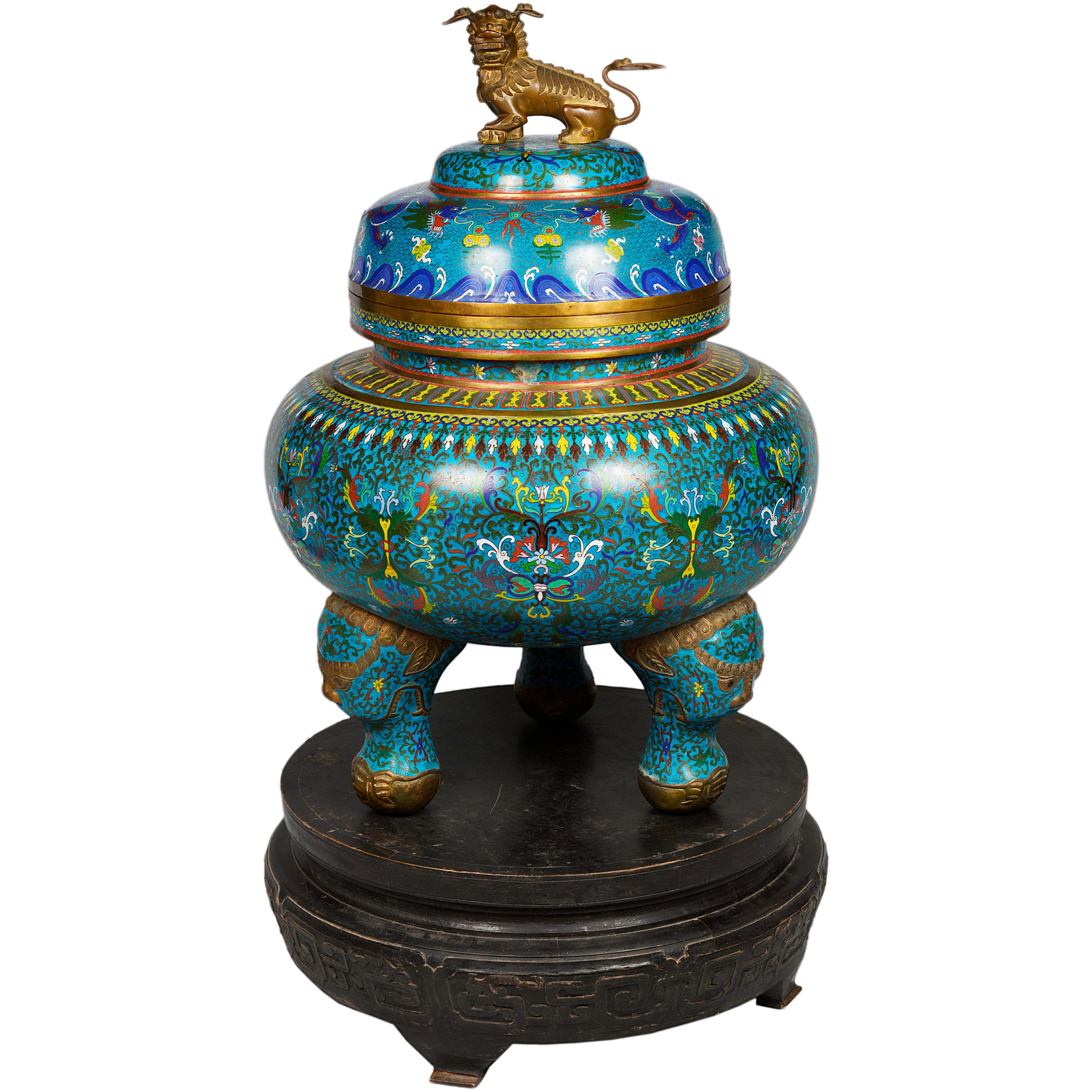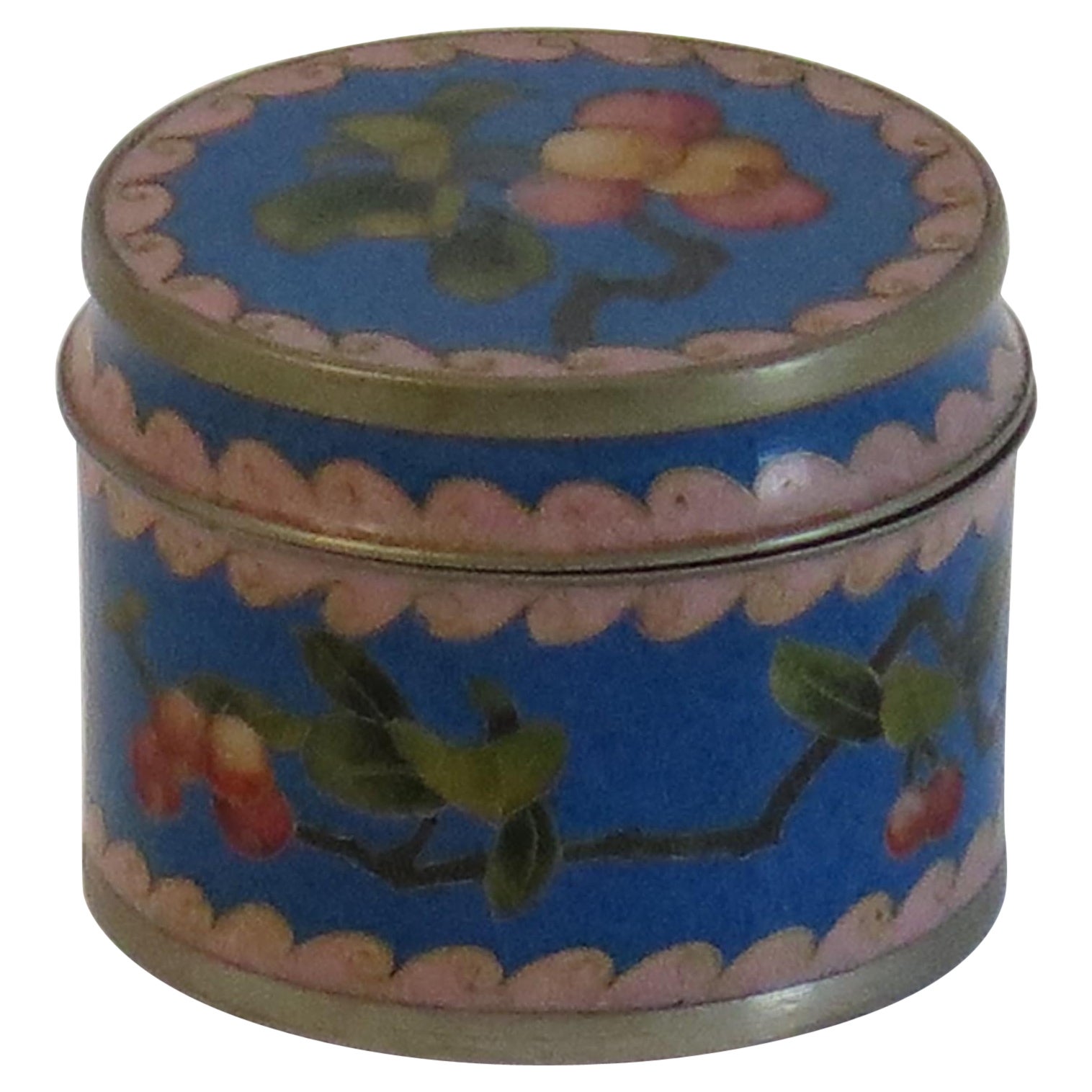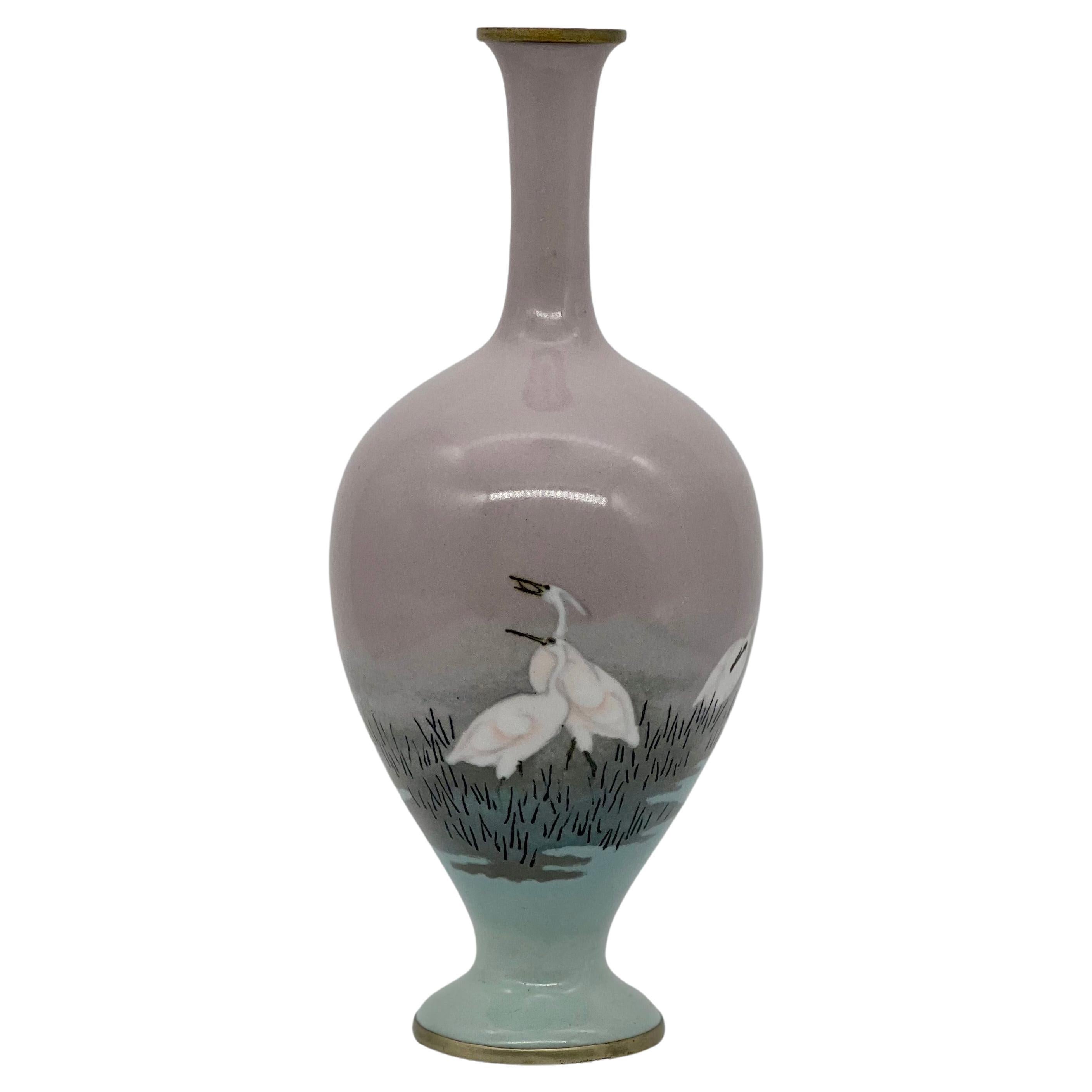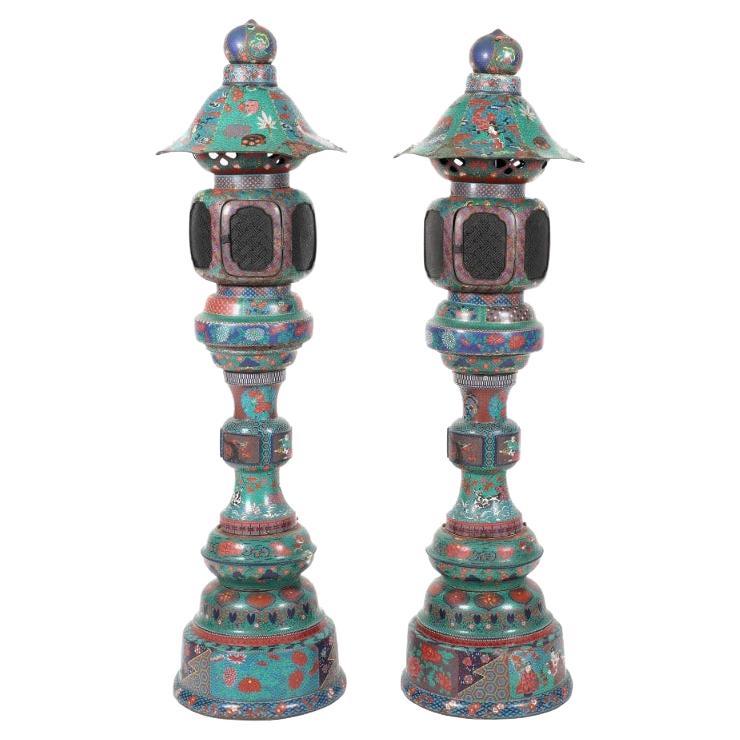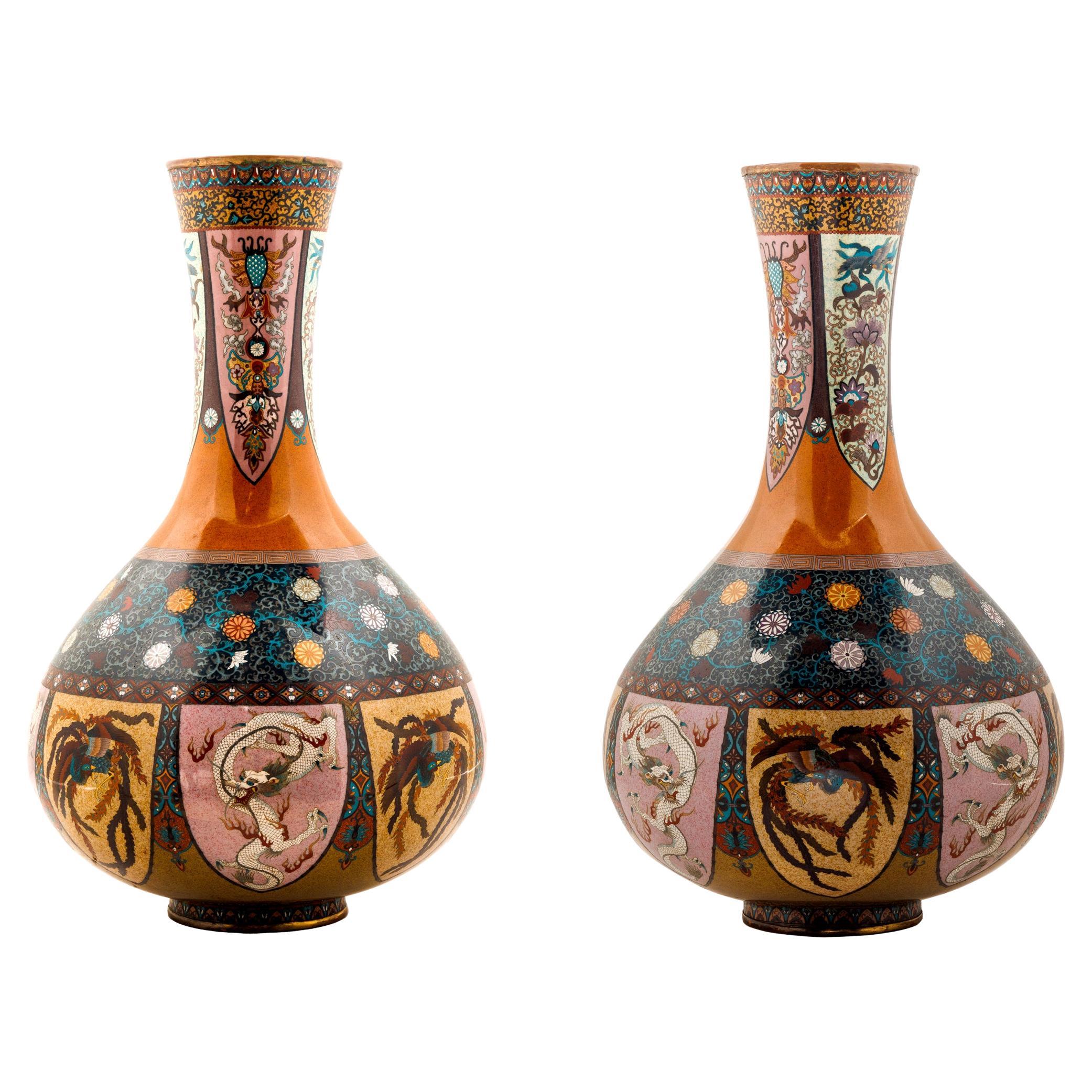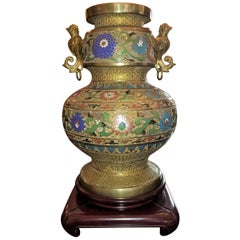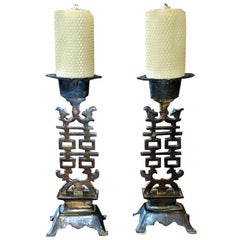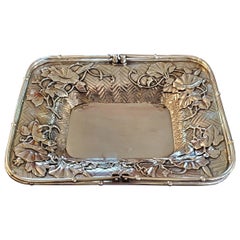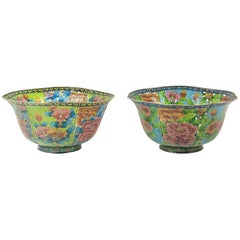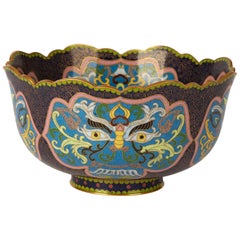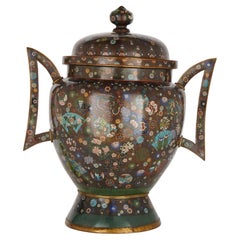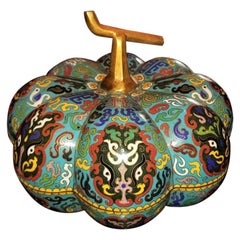
Chinese Cloisonne Pumpkin Lidded Box
View Similar Items
Want more images or videos?
Request additional images or videos from the seller
1 of 12
Chinese Cloisonne Pumpkin Lidded Box
About the Item
- Dimensions:Height: 8.5 in (21.59 cm)Diameter: 11.5 in (29.21 cm)
- Style:Archaistic (In the Style Of)
- Materials and Techniques:
- Place of Origin:
- Period:
- Date of Manufacture:1910-1920
- Condition:Wear consistent with age and use. Excellent original condition.
- Seller Location:Dallas, TX
- Reference Number:1stDibs: LU3978116125791
About the Seller
4.9
Platinum Seller
Premium sellers with a 4.7+ rating and 24-hour response times
Established in 2015
1stDibs seller since 2018
387 sales on 1stDibs
Typical response time: 1 hour
Authenticity Guarantee
In the unlikely event there’s an issue with an item’s authenticity, contact us within 1 year for a full refund. DetailsMoney-Back Guarantee
If your item is not as described, is damaged in transit, or does not arrive, contact us within 7 days for a full refund. Details24-Hour Cancellation
You have a 24-hour grace period in which to reconsider your purchase, with no questions asked.Vetted Professional Sellers
Our world-class sellers must adhere to strict standards for service and quality, maintaining the integrity of our listings.Price-Match Guarantee
If you find that a seller listed the same item for a lower price elsewhere, we’ll match it.Trusted Global Delivery
Our best-in-class carrier network provides specialized shipping options worldwide, including custom delivery.More From This Seller
View AllLarge Oriental Champleve Cloisonne Urn on Stand
Located in Dallas, TX
Presenting a beautiful and very high quality large oriental champlevé cloisonné urn on stand.
Late 19th or early 20th century, circa 1890-1910.
Pro...
Category
Early 20th Century Japanese Japonisme Metalwork
Materials
Brass, Bronze, Enamel
Vintage Chinese Double Happiness Wedding Candlesticks
Located in Dallas, TX
Presenting a lovely vintage Chinese double happiness wedding candlesticks, a matching pair.
Made in China in the early 20th century of bronzed pewt...
Category
Early 20th Century Chinese Archaistic Metalwork
Materials
Pewter
Japanese Meiji Champleve and Bronze Urn
Located in Dallas, TX
Presenting a gorgeous Japanese Meiji Champleve and bronze urn.
Made in Japan during the Meiji Period circa 1880.
The body of ...
Category
Antique Late 19th Century Japanese Meiji Metalwork
Materials
Bronze, Enamel
Japanese Meiji Period Sterling Silver 2 Handled Basket by Katsu Miyamoto
By Miyamoto Shoko 1
Located in Dallas, TX
PRESENTING a GORGEOUS, VERY HIGH QUALITY and EXTREMELY RARE piece of Japanese Meiji Period Sterling Silver 2 Handled Basket by Katsu Miyamoto.
EXQUISITE, EXCEPTIONAL, RARE & IMPORTANT!
This is definitely a Meiji Period piece due to the fact that it is marked with the sterling silver mark “jungin”.
The Meiji period was from 1868 to 1912 and in 1928 a law was introduced in Japan compelling the use of decimal marks for silver.
This pre-dates that decimalization law.
We are of the opinion that it is from circa 1900.
Miyamoto Shoko was founded in 1880 as the first silverware specialty shop. In 1899, Miyamoto Shoko’s silverwares were ordered by the family members of the Emperor of Japan, and to this day, they are making fine and graceful handicrafts with skillful craftsmen.
Loved by numerous customers since the Meiji era, Miyamoto Shoko’s products have also been given to Princess Mako and Princess Kako of Akishino, as well as Princess Aiko Toshinomiya, on their birthdays.
Katsu Miyamoto (宮本勝), in 1880, in order to increase the sales of tobacco and cigarettes to foreigners founded the Moyamoto Shoko company, which produced different silverwares in general and particularly silver cigarette cases. Miyamoto’s first name, Katsu (勝) in some sources is written as “Masaru”, since 勝 kanji can be pronounced in both ways.
This basket is of the HIGHEST QUALITY imaginable!
The top of the basket has the MOST GORGEOUS repousse work of flowers, probably lotus flowers, with leaves and foliage. It has an underlying chevron effect chasing, reflecting parquetry.
The 2 handles are cast in the form of bamboo handles.
The rim of the top likewise is cast as bamboo.
The base is equally stunning in a different way!
It is chased with a chevron effect, like parquetry flooring and the four feet simulate pieces of sliced bamboo with an interlinking gallery of support columns, likewise, simulating bamboo.
The QUALITY of WORKMANSHIP is OUTSTANDING!
The pieces weighs exactly 525 grams.
This piece takes my breath away!
This is one for the SERIOUS COLLECTOR of EXQUISITE AND RARE Japanese silver. You will not find another like it, for sale ANYWHERE ELSE IN THE WORLD …… I know as I have searched!
Provenance: Acquired from a Dallas Private Collector.
Dimensions: 9.6 inches wide, 7.6 inches deep and 2.75 inches tall ( 7.25 inches tall with handles up)
Condition: Very good. It looks like the base 4 legged gallery, has been repaired/re-attached to the base, but otherwise it is excellent and of Museum quality.
The Meiji period (明治時代 Meiji-jidai?), also known as the Meiji era, is a Japanese era which extended from October 23, 1868 through July 30, 1912.[1] This period represents the first half of the Empire of Japan during which Japanese society moved from being an isolated feudal society to its modern form. Fundamental changes affected its social structure, internal politics, economy, military, and foreign relations. The period corresponded with the reign of Emperor Meiji after 1868, and lasted until his death in 1912. It was succeeded by the Taishō period upon the accession of Emperor Taishō to the throne.
Solid silver pieces...
Category
Early 20th Century Japanese Meiji Metalwork
Materials
Sterling Silver
Antique Indian Dhokra Horse and Rider Sculpture
Located in Dallas, TX
Presenting a lovely antique Indian Dhokra horse and rider sculpture.
Probably from the late 19th or early 20th century as is evidenced by its natural patina and clear evidence of age.
It depicts an Indian Warrior with a sword in his right hand mounted on his horse/steed.
The warrior is in classical and ancient Southeast Asian Indian attire and he holds the horse’s reins in his left hand.
The body of the horse is a series of lines (in the Classic Dhokra Style) and it has a tribal headdress...
Category
Antique Late 19th Century Indian Anglo Raj Metalwork
Materials
Metal
Early 20th Century Gilt Metal Thai Khon Dancer
Located in Dallas, TX
Presenting a beautiful early 20th century Gilt Metal Thai Khon Dancer.
Made in Thailand (South East Asia) circa 1920.
It features a gilt meta...
Category
Early 20th Century Thai Country Sculptures and Carvings
Materials
Metal
You May Also Like
Pair of Large Chinese Cloisonné Plique-à-Jour Bowls
Located in Atlanta, GA
A large pair of Chinese cloisonné enamel bowl made with the technique of plique-à-jour (means "letting in daylight" in French), a challenging method similar to small scale stained windows...
Category
20th Century Chinese Chinoiserie Metalwork
Materials
Copper, Enamel
Vintage Chinese Republic Period Cloisonné Bowl, Early 20th Century
Located in Bishop's Stortford, Hertfordshire
An exceptional and finely decorated vintage Chinese Republic period cloisonné bowl decorated with panels containing grotesque masks. The rounde...
Category
Early 20th Century Chinese Metalwork
Materials
Enamel
Large Meiji Period Cloisonne Enamel Koro
Located in London, GB
Large Meiji Period Cloisonne Enamel Koro
Japanese, late 19th Century
Height 88cm, width 76cm, depth 53cm
This superb cloisonne enamel koro was made during...
Category
Antique Late 19th Century Japanese Meiji Metalwork
Materials
Bronze, Enamel
Fine Japanese Kyoto Shippo Cloisonne Enamel Vase, 19th C
Located in London, GB
A fine Japanese Kyoto Shippo Cloisonne enamel vase 19th C
Meiji Period
JAPANESE CLOISONNE ENAMEL VASE,?decorated with cranes and butterflies amongst lotus and iris blooms reser...
Category
Antique Mid-19th Century Metalwork
Materials
Enamel
A Large Japanese Cloisonne Enamel vase attributed to Ando Jubei
By Ando Jubei
Located in London, GB
A Large Japanese Cloisonne Enamel vase attributed to Ando Jubei.
Taisho period (1912 – 1926)
A large baluster Cloisonne-Enamel vase worked in musen and silver wire of varying gauge...
Category
Early 20th Century Japanese Metalwork
Materials
Enamel
A Fine Japanese Cloisonne Enamel Vase and Cover. Meiji Period
Located in London, GB
A Exquisite Cloisonne Enamel Vase and cover
Meiji period -Late 19th C
Exquisite and refined four sided cloisonne vase and cover made in gold and silver wire with dragons and phoen...
Category
Antique Late 19th Century Japanese Metalwork
Materials
Enamel
Recently Viewed
View AllMore Ways To Browse
Antique Chinese Cloisonne Box
Cloisonne Antique Chinese Boxes Cloisonne Boxes
Cloisonne Brass Box
Large Chinese Dragons Brass
Chinese Boxes With Dragon Motif
Brass Box With Dragons
Chinese Bronze Pumpkin
Mughal Islamic
Middle Eastern Copper
Ancient Asian Metalwork
Islamic Copper Art
Mughal Art Large
Brass Tibetan
Chinese Antique Censer
Antique Chinese Bronze Marks
Silver Chrysanthemum Japanese
Censer Incense
Meiji Period Japanese Bronze Bird
